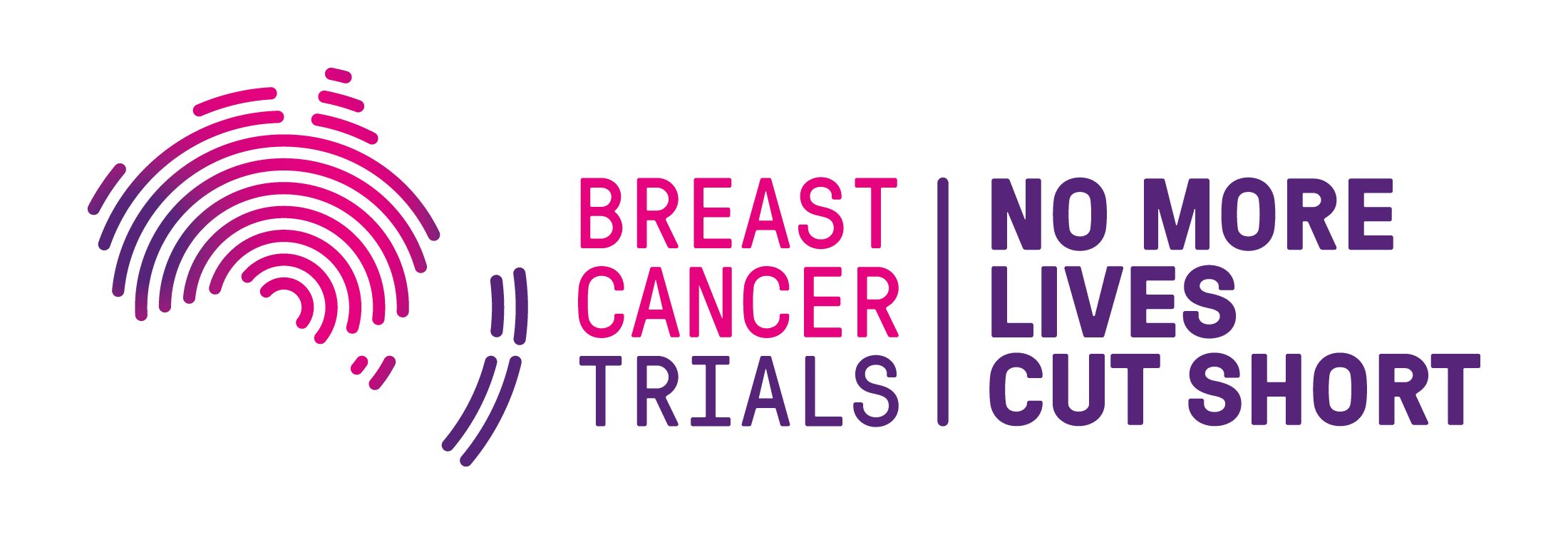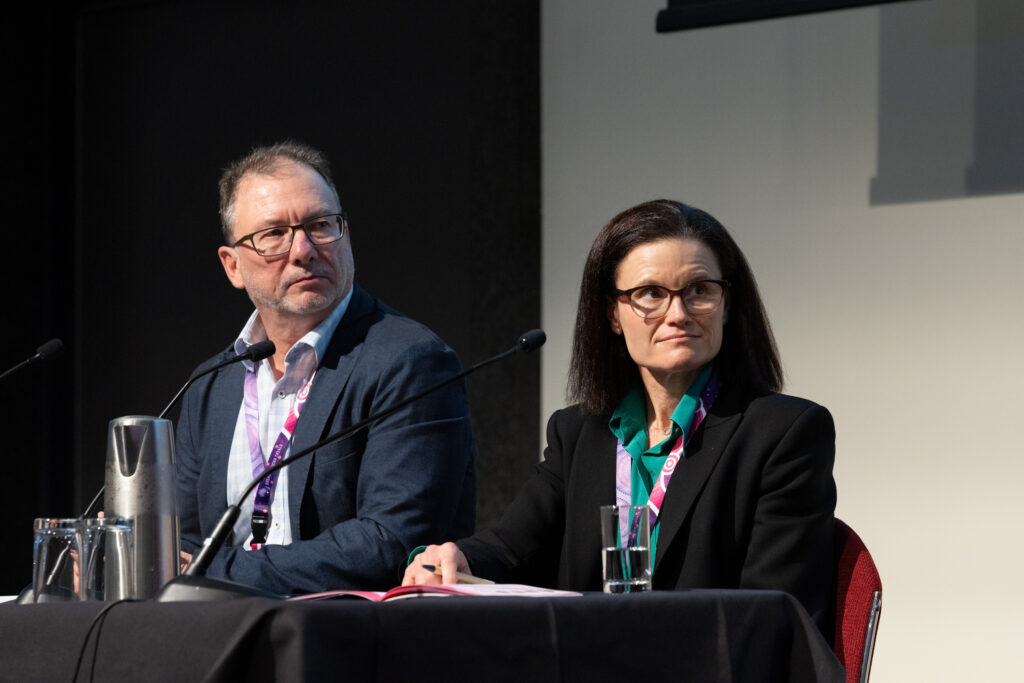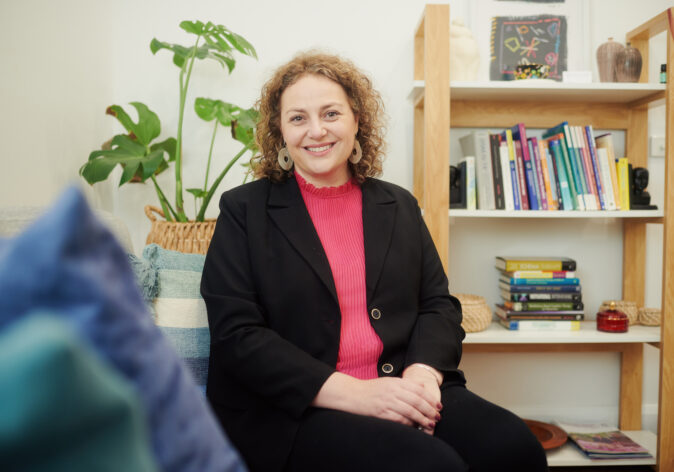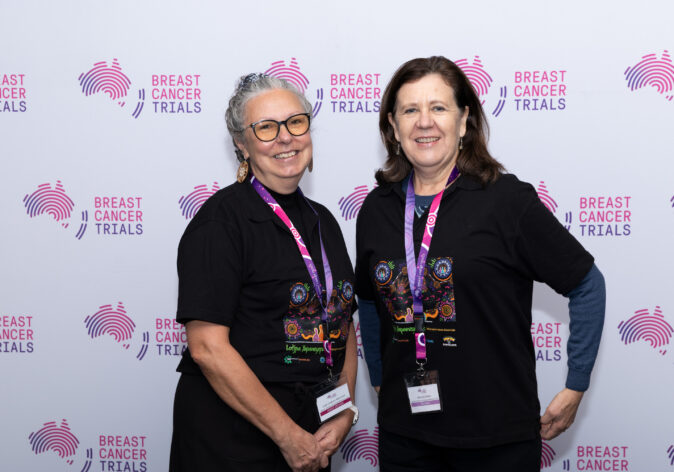4CASTING the Future: Innovations in Triple Negative Breast Cancer
Triple negative breast cancer remains one of the most challenging types to treat because it lacks the common treatment targets, grows and spreads aggressively, is highly diverse and currently has limited effective therapies – but new research is changing the story.
Associate Professor Rachel Dear takes us inside the 4CAST trial showing how science moves from bench to bedside and what this could mean for the future of triple negative breast cancer treatment.
“The forecast study is looking at a new treatment for metastatic triple negative breast cancer, in particular, androgen receptor positive metastatic triple negative breast cancer. The study drug is called INO-464, which is an androgen receptor antagonist.”
“This treatment drug also blocks the production of androgens as well, and in preclinical models, so that means in the laboratory it slows down the growth of cancer and delays time until new metastases occur in preclinical models of metastatic triple negative breast cancer.”
“And it does this in in combination with IV treatment, including different chemotherapy agents. And so now because of these promising laboratory results, we are testing this in people.”
Listen to the podcast
Associate Professor Rachel Dear takes us inside the 4CAST trial showing how science moves from bench to bedside and what this could mean for the future of triple negative breast cancer treatment.

Key takeaways
-
A new targeted approach for a hard-to-treat cancer
Triple negative breast cancer (TNBC) is one of the most aggressive and difficult subtypes to treat because it lacks common therapeutic targets (estrogen, progesterone, HER2). The 4CAST trial represents a major step forward by identifying the androgen receptor (AR) as a new target for a subset of TNBC patients (AR-positive disease). -
The 4CAST trial is translating strong lab results into the clinic
Preclinical research from Dr. Christine Schaefer’s lab at the Garvan Institute showed that combining the AR antagonist SNOL (INO-464) with chemotherapy re-sensitised resistant TNBC cells, improving cancer control in lab and animal models. This laboratory discovery directly led to the current Phase 1a clinical trial, co-led by Associate Professor Rachel Dear, testing the safety and early efficacy of this combination in patients. -
Early clinical results are promising and well-tolerated
In the first six evaluable patients, the combination of SNOL and chemotherapy was safe, well-tolerated, and showed encouraging signs of disease stability, with five patients maintaining stable disease and some experiencing prolonged responses. Side effects were mainly due to chemotherapy (e.g., neuropathy), not the new drug. -
Decentralized trial design is improving access and future potential
The study recently received ethics approval for a decentralized trial model, allowing patients—especially those in regional areas—to receive chemotherapy locally, take SNOL tablets at home, and be monitored via telehealth. This innovation could boost recruitment and make future trials more inclusive. Long term, SNOL may enhance not only chemotherapy but also newer treatments like immunotherapy and antibody-drug conjugates, offering hope for more effective, personalized TNBC therapy.
Can you walk us through how the pre-clinical findings led to the 4CAST clinical trial?
“So, the preclinical findings are the work of Christine Schafer’s lab at the Garvin Institute, where she has been working on repurposing drugs and looking at new indications. In particular, SNOL, an androgen receptor antagonist that has been looked at in prostate cancer.”
“And then there were early trials internationally looking at its role in breast cancer. But then she started testing it more in the lab, in metastatic triple negative breast cancer cell lines, and found that when she combined it with chemotherapy, rather than giving it by itself, it had much better results because in earlier trials in humans, it had just been given by itself as a tablet.”
“But when she combined it in these mouse models in the lab combined with chemotherapy, she found that it resensitized the cancer to chemotherapy which meant the cells died better and were controlled for longer.”
“And so, she’s worked out the exact mechanisms of why this occurs. It changes cell state, it makes cells more sensitive again, when previously they were resistant to chemotherapy, so unless Christine’s lab had done this work, we wouldn’t have then progressed to testing it in a clinical trial in human beings.”
“I first met Christine almost six years ago. She came to me with this exciting work, and she showed me the graph, and said ‘look what’s happening to these cell lines, what do you think about this? Do you think that this would work in human beings? We know that as a single agent, as a tablet, it’s really safe. Do you think we combine it with chemotherapy?’ So then that meeting between Christine and myself then led to the idea of actually testing whether the combination of the tablet and chemotherapy in human beings are safe, and also now looking to see if it’s an effective combination as well.”
“It is a phase one a trial, and the purpose of a trial like that is initially to check that the combination of chemotherapy and SNOL is safe. And we have completed that part of the study, which is called dose exploration. So, we are trying to work out what is a safe dose of SNOL to combine with chemotherapy.”
“We enrolled eight patients into that study, and six of them were eligible for the safety component of the study, and we found that the dose that we started with of SNOL was safe combined with chemotherapy. And we know that this is the same dose that as a single agent was also safe and effective. And it was good to know that unlike other phase one trials.”
“We were already giving an effective tablet at it. You know, that was likely to be efficacious, and it was such a relief that it was also safe and well tolerated as well. So now that we found in those six patients, the combination of TER and chemotherapy was safe, now we’re into the part of the study called dose expansion, where we are combining the treatments.”
“And the goal of this part of the study is to see if the combination is effective. The good news was that we already got some early signals of efficacy of chemotherapy combined with SNOL. And in fact, out of those six valuable patients, five of the patients had stable disease. And in a couple of patients, that was quite a prolonged, duration of response to the combination treatment.”
“So, a hint that what Christine was seeing in the lab, we were also now seeing in our patients in the clinic. The main side effect issue has been not related to the SNOL, but related to chemotherapy. We’re using taxane chemotherapy, either docetaxel or paclitaxel, and a lot of patients have already received that type of chemotherapy.”
“This means they’re vulnerable to a side effect called peripheral neuropathy, which can cause numbness and tingling of the fingers and toes. And so that’s quite a common reason people come off the study due to that side effect, not because their cancer started to grow.”
“I’m excited that this treatment offers a targeted treatment approach because I think many patients feel quite disheartened that the main treatment option that they’re offered is chemotherapy. They often think, surely there must be a new treatment that works better than just chemotherapy. So, I think that offering them a targeted therapy that’s well tolerated, that’s a tablet, is very exciting.”
How close are we to seeing this move beyond the trial setting?
“We currently have three people enrolled in dose expansion, and we need between 25 and 29 patients. So, we really need to increase our recruitment to the study. It’s going well, but we need to increase it. But an exciting development is that we just got ethics approval for a decentralized trial model, which means that the chemotherapy can be given as standard of care in a patient’s local hospital by the usual oncologist, and we can ship tablets from the King Hall Cancer Center to the patient.”
“Using telehealth appointments, we can monitor what’s happening with that patient on trial. So, it takes away issues such as governance at another site. It takes away the time and travel, you know, from a patient who might live in a regional area in New South Wales.”
“They don’t have to fly to the Kinghorn for this treatment. They can have it all with their usual oncologists. So, I think that by giving that opportunity to enroll in the study that way, that will increase recruitment. And using that telehealth trials appointment, we can already kickstart pre-screening for the study because we have to check their androgen-receptor positive.”
“That can be done locally and often it is now being added to a triple negative breast cancer pathology report. But we can also get that tissue and test it at St. Vincent’s Hospital as well. And that can all be started early on.”
What excites you the most about the potential for this research?
“I’m excited that this treatment offers a targeted treatment approach because I think many patients feel quite disheartened that the main treatment option that they’re offered is chemotherapy.”
“And there are other targeted treatments now being studied for triple negative breast cancer. For example, antibody drug conjugates, immunotherapy. But I think that the Tylenol tablets even combined with these new treatments may make them work better. Not just making chemotherapy work better, but even some of these newer treatments.”
“So perhaps that would just be for AR-positive metastatic triple negative breast cancer, you could still have your immunotherapy. But take an antibody drug conjugate, take your SNOL tablet and maybe it will sensitize the cancer cells to work to be even more responsive to some of the other new treatments coming along.”
QUICK ACCESS

Associate Professor Rachel Dear
Support Breast Cancer Research
Listen Now: 4CASTING the Future: Innovations in Triple Negative Breast Cancer
Triple negative breast cancer remains one of the most challenging types to treat, but new research is changing the story.
Podcast Transcript
-
4CASTING the Future: Innovations in Triple Negative Breast Cancer
4CASTING the Future: Innovations in Triple Negative Breast Cancer
Triple negative breast cancer remains one of the most challenging types to treat because it lacks the common treatment targets, grows and spreads aggressively, is highly diverse and currently has limited effective therapies – but new research is changing the story.
Associate Professor Rachel Dear takes us inside the 4CAST trial showing how science moves from bench to bedside and what this could mean for the future of triple negative breast cancer treatment.
“The forecast study is looking at a new treatment for metastatic triple negative breast cancer, in particular, androgen receptor positive metastatic triple negative breast cancer. The study drug is called INO-464, which is an androgen receptor antagonist.”
“This treatment drug also blocks the production of androgens as well, and in preclinical models, so that means in the laboratory it slows down the growth of cancer and delays time until new metastases occur in preclinical models of metastatic triple negative breast cancer.”
“And it does this in in combination with IV treatment, including different chemotherapy agents. And so now because of these promising laboratory results, we are testing this in people.”
Triple negative breast cancer is often described as one of the more challenging subtypes to treat. What makes it so difficult and how does this research aim to change that?
“Triple negative breast cancer is a difficult type of breast cancer to treat, and in fact, it has the worst prognosis out of all the different types of breast cancer with a median overall survival of only about 18 months.”
“This is because historically there hasn’t been a target to focus on. It’s defined by its lack of target: estrogen, progesterone, and HER2 are all negative. Unlike hormone receptor positive breast cancer or HER2-positive breast cancer, where we actually have a defined target.”
“So that’s why it’s difficult to treat, and that’s why this study is so exciting because we’ve identified the androgen receptor as a target for triple negative breast cancer.”
The phrase ‘from bench to bedside’ suggests this research has come a long way. Can you walk us through how the preclinical findings led to this clinical trial?
“So, the preclinical findings are the work of Christine Schafer’s lab at the Garvin Institute, where she has been working on repurposing drugs and looking at new indications. In particular, SNOL, an androgen receptor antagonist that has been looked at in prostate cancer.”
“And then there were early trials internationally looking at its role in breast cancer. But then she started testing it more in the lab, in metastatic triple negative breast cancer cell lines, and found that when she combined it with chemotherapy, rather than giving it by itself, it had much better results because in earlier trials in humans, it had just been given by itself as a tablet.”
“But when she combined it in these mouse models in the lab combined with chemotherapy, she found that it resensitized the cancer to chemotherapy which meant the cells died better and were controlled for longer.”
“And so, she’s worked out the exact mechanisms of why this occurs. It changes cell state, it makes cells more sensitive again, when previously they were resistant to chemotherapy, so unless Christine’s lab had done this work, we wouldn’t have then progressed to testing it in a clinical trial in human beings.”
“I first met Christine almost six years ago. She came to me with this exciting work, and she showed me the graph, and said ‘look what’s happening to these cell lines, what do you think about this? Do you think that this would work in human beings? We know that as a single agent, as a tablet, it’s really safe. Do you think we combine it with chemotherapy?’ So then that meeting between Christine and myself then led to the idea of actually testing whether the combination of the tablet and chemotherapy in human beings are safe, and also now looking to see if it’s an effective combination as well.”
“It is a phase one a trial, and the purpose of a trial like that is initially to check that the combination of chemotherapy and SNOL is safe. And we have completed that part of the study, which is called dose exploration. So, we are trying to work out what is a safe dose of SNOL to combine with chemotherapy.”
“We enrolled eight patients into that study, and six of them were eligible for the safety component of the study, and we found that the dose that we started with of SNOL was safe combined with chemotherapy. And we know that this is the same dose that as a single agent was also safe and effective. And it was good to know that unlike other phase one trials.”
“We were already giving an effective tablet at it. You know, that was likely to be efficacious, and it was such a relief that it was also safe and well tolerated as well. So now that we found in those six patients, the combination of TER and chemotherapy was safe, now we’re into the part of the study called dose expansion, where we are combining the treatments.”
“And the goal of this part of the study is to see if the combination is effective. The good news was that we already got some early signals of efficacy of chemotherapy combined with SNOL. And in fact, out of those six valuable patients, five of the patients had stable disease. And in a couple of patients, that was quite a prolonged, duration of response to the combination treatment.”
“So, a hint that what Christine was seeing in the lab, we were also now seeing in our patients in the clinic. The main side effect issue has been not related to the SNOL, but related to chemotherapy. We’re using taxane chemotherapy, either docetaxel or paclitaxel, and a lot of patients have already received that type of chemotherapy.”
“This means they’re vulnerable to a side effect called peripheral neuropathy, which can cause numbness and tingling of the fingers and toes. And so that’s quite a common reason people come off the study due to that side effect, not because their cancer started to grow.”
And so how close do you think we are to seeing this move beyond the trial setting?
“We currently have three people enrolled in dose expansion, and we need between 25 and 29 patients. So, we really need to increase our recruitment to the study. It’s going well, but we need to increase it. But an exciting development is that we just got ethics approval for a decentralized trial model, which means that the chemotherapy can be given as standard of care in a patient’s local hospital by the usual oncologist, and we can ship tablets from the King Hall Cancer Center to the patient.”
“Using telehealth appointments, we can monitor what’s happening with that patient on trial. So, it takes away issues such as governance at another site. It takes away the time and travel, you know, from a patient who might live in a regional area in New South Wales.”
“They don’t have to fly to the Kinghorn for this treatment. They can have it all with their usual oncologists. So, I think that by giving that opportunity to enroll in the study that way, that will increase recruitment. And using that telehealth trials appointment, we can already kickstart pre-screening for the study because we have to check their androgen-receptor positive.”
“That can be done locally and often it is now being added to a triple negative breast cancer pathology report. But we can also get that tissue and test it at St. Vincent’s Hospital as well. And that can all be started early on.”
What excites you the most about the potential of this research and what it could mean for the future of treating triple negative breast cancer?
“I’m excited that this treatment offers a targeted treatment approach because I think many patients feel quite disheartened that the main treatment option that they’re offered is chemotherapy. They often think, surely there must be a new treatment that works better than just chemotherapy. So, I think that offering them a targeted therapy that’s well tolerated, that’s a tablet, is very exciting.”
“And there are other targeted treatments now being studied for triple negative breast cancer. For example, antibody drug conjugates, immunotherapy. But I think that the Tylenol tablets even combined with these new treatments may make them work better. Not just making chemotherapy work better, but even some of these newer treatments.”
“So perhaps that would just be for AR-positive metastatic triple negative breast cancer, you could still have your immunotherapy. But take an antibody drug conjugate, take your SNOL tablet and maybe it will sensitize the cancer cells to work to be even more responsive to some of the other new treatments coming along.”



